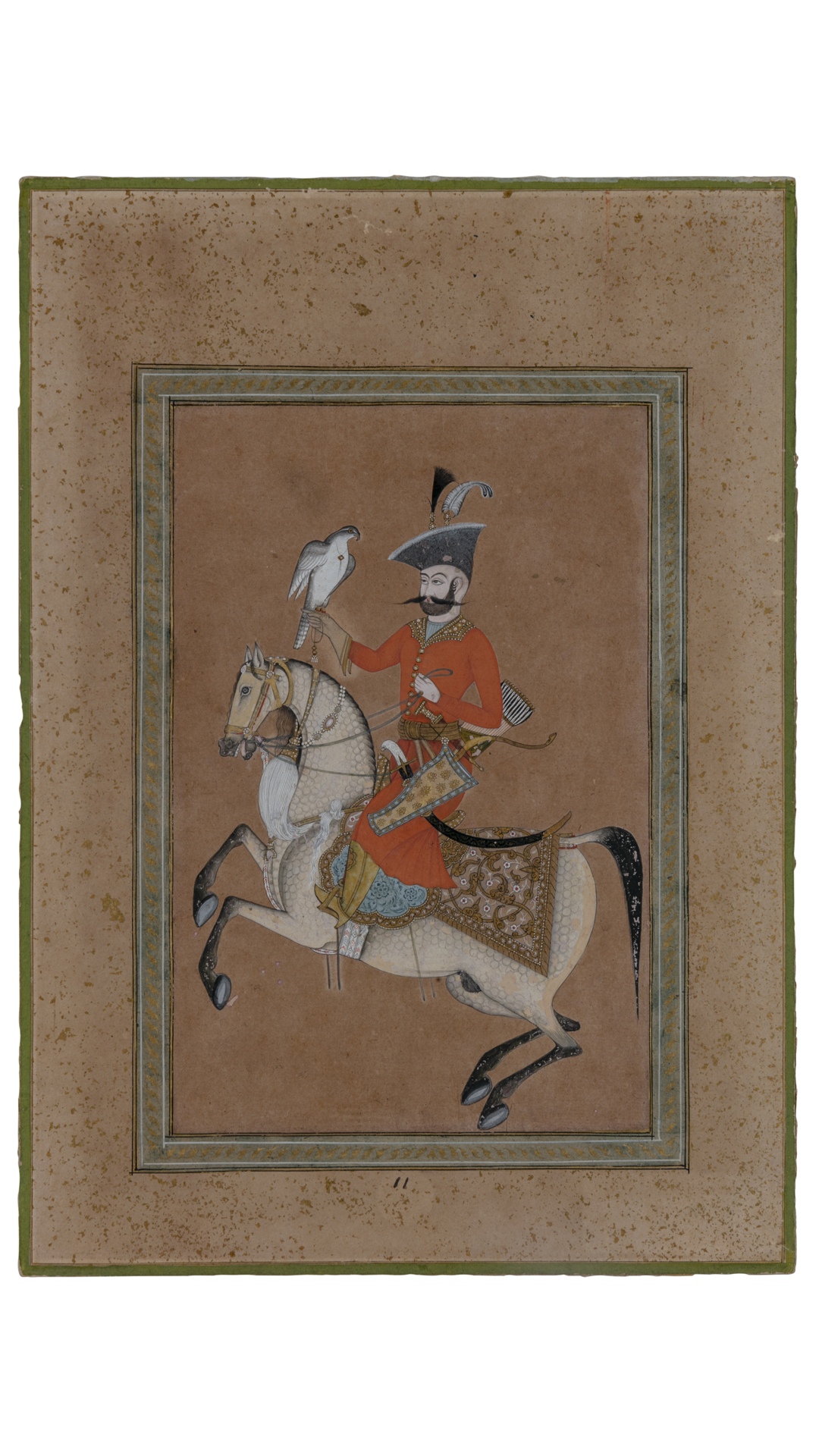Portrait of Shah Abbas II of Persia (1642-1667)
Description
This is an equestrian portrait of the Shah Abbas II of Persia with the hawk resting on his fist as a symbol of sovereignty. The Persians consider dogs impure and therefore employ birds for hunting purposes.
Shah Abbas II was the seventh Shah of Safavid Iran. He lived a very affluent lifestyle and also maintained a royal atelier. He gave patronage to both Iranian and Dutch painters and encouraged Iranian painters to learn the European painting style. He had diplomatic relations with the Mughals and Qandhahar was the primary point of conflict between them.
The present painting seems to be a Mughal copy of an Iranian painting. Nils Mattsson Kioping, a swede traveler who visited Iran at the time of Shah Abbas II writes “ For hunting, he (Shah Abbas II) uses falcons, among which is a white raven with a red beak, which is as swift in striking birds as the falcon. He also has two hundred leopards that have been trained so that no game in the fields or forests can pass them by without their catching it in three leaps…..In his state where the royal horses are fed, and which are one hundred in numbers, there is exceptional cleanliness…They are covered with the finest golden cloth and their vessels are of fine Arabian gold.” (Travelogue and autobiography 1647-1657, Nils Mattssons Kioping, KVHAA handlingar historiska series 39, pp 77-78).
Falconry or hawking, a form of hunting was a popular sport amongst Kings and noblemen in medieval times. This form of hunting was viewed more as a means of entertainment. Falconers raised the young birds usually falcons, hawks, and eagles, and trained them to hunt small birds and animals like partridges, cranes, and hares.
Artists drew and painted many varieties of falcon portraits during the times of Jahangir (r. 1605- 27). Mughal emperors had a separate department for the royal hawk and the employees. The baz namas are treatises or books that contain detailed chapters on ways to keep the hawks healthy and treat their diseases.
Before the turn of the 16th century, Iran went through a devastating period due to Turkish and Mongol invasions. The peaceful rule of the Safavid dynasty (1499-1736) brought about the revival of the passion for hawking and hunting.
Collection
Indian Miniature Paintings
Object Type
Miniature Painting
Material
Opaque water colour on paper
Schools/Culture/Period
Mughal
Technique
--
Date
Early 18th Century CE
Location
--
Dimension
25 x 16.3 cms (without border)
